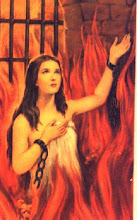To be frank, most of the music that I listen to does not fit into any musical culture. Mostly, I listen to “post-bands” that are although influential, self contained in terms of music culture.
To mind I do believe that one music culture that has influenced me was the short lived mid-1970’s “No Wave” movement of New York City.
The fundamentals of No Wave are not strictly defined because it is very difficult to find two artists who are similar in terms of sound. Many would describe the music as “atonal”, but I assert that this is not a fair criticism of the music. By stating that No Wave atonal, critics assume that No Wave was supposed to be another form of Rock and Roll, however nothing can be farther from the truth. No Wave is in fact a repudiation of Rock and Roll. By crating jarring and chaotic soundscapes and using trance-inducing rhythms, the No Wave artists were in attempt to subvert both the self-indulgent epics of Progressive Rock and the sped-up bubblegum of Punk. Some notable No Wave artists include Lydia Lunch, James White and the Blacks, Glen Branca, Teenage Jesus and the Jerks, DNA, The Contortions and Sonic Youth.
The No Wave movement was not confined to music. Often artisans of one medium would try their chances with other forms of expression.
More than anything, perhaps No Wave was an attitude. Aggressive, dysfunctional, possibly nihilistic, possibly sociopathic, it was art and not art. Art, as in established art, was blasphemy to No Wave, who saw the destruction of art as an institution as a noble cause. For all these reasons it was meaningful to me because through it I realized that I’m just not that good at being a well-adjusted, likable person. But, hey, I’ll always have NY 1977.
Saturday, January 16, 2010
Subscribe to:
Post Comments (Atom)

Postscript:
ReplyDeleteI am a generally brusque and misanthropic person, so I was inherently drawn to the alienating sounds of No wave. The most profound change (or impact) that it has had on my life is that it made me feel fine to be just as nasty as I wanted to be. In some ways the dissonant and the chaotic are beautiful, and by listening to it I can discover the hidden beauty in the grotesque; a quality rare in the age of Photoshop and auto-tune.